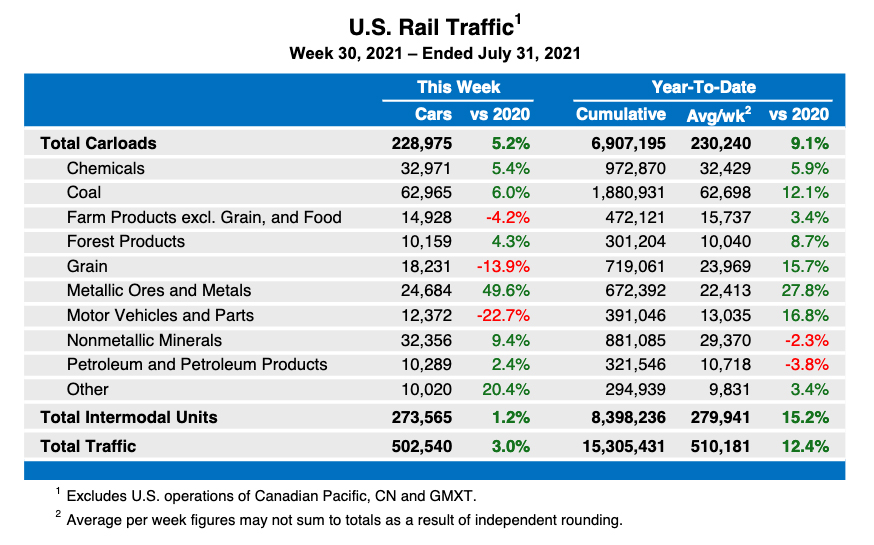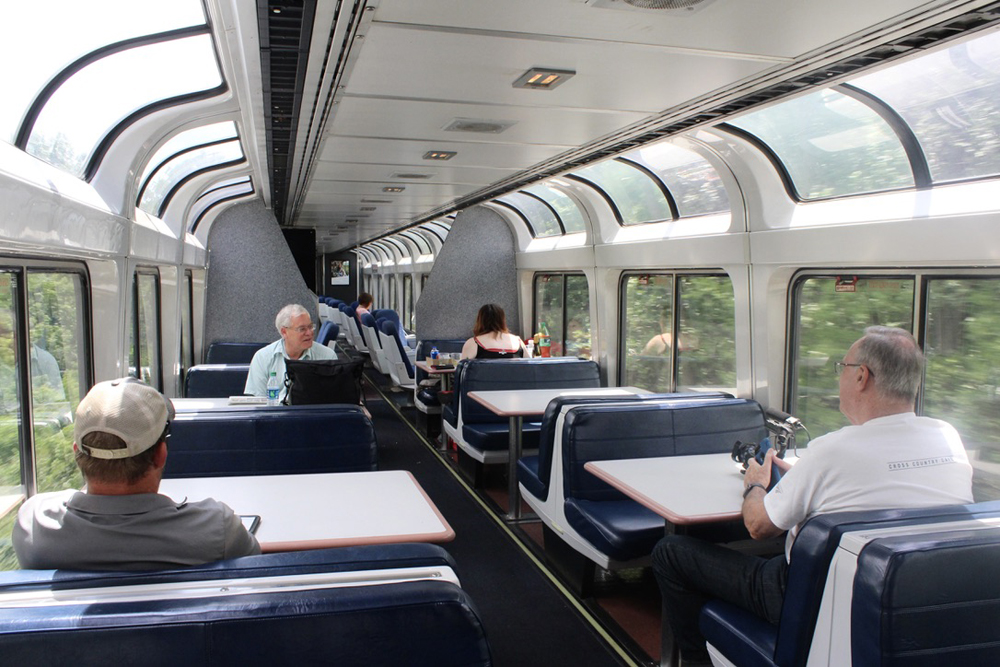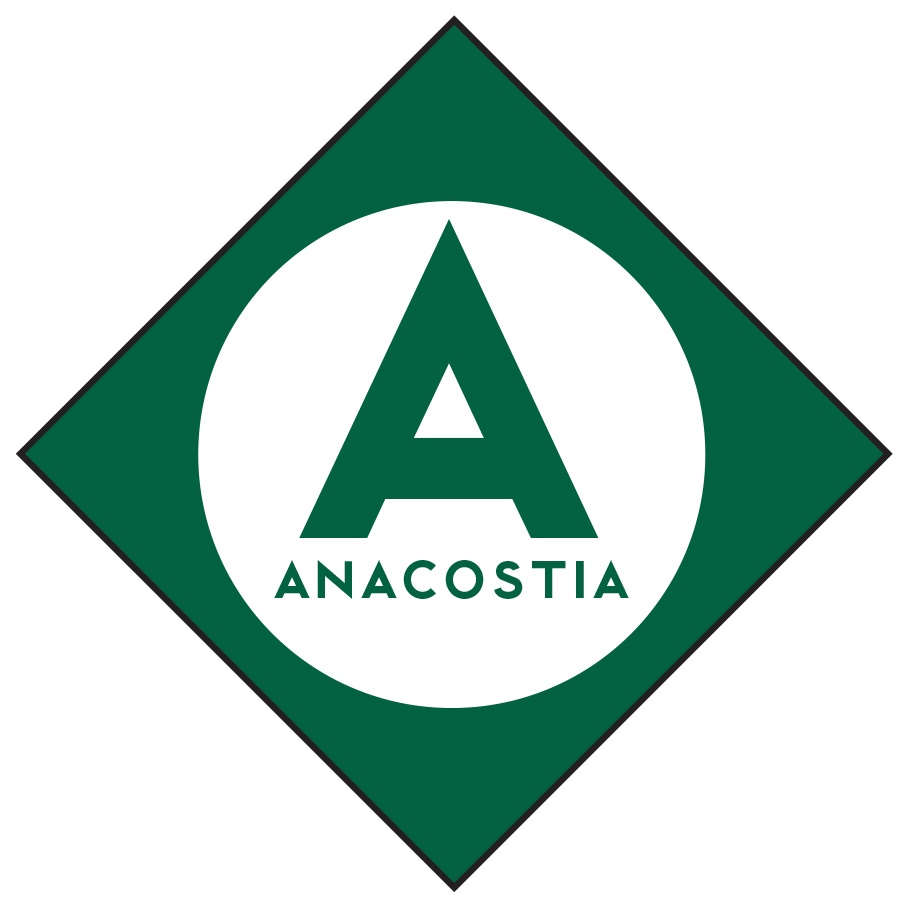
WASHINGTON — Overall U.S. rail traffic for July was up 3.8% over July 2020, according to statistics released by the Association of American Railroads.
The numbers include 904,670 carloads, an increase of 55,969, or 6.6%, over July 2020, and 1,066,169 containers and trailers, an increase of 15,450 units, or 1.5%. While the figures showed an improvement over the same month a year earlier, the increase was less significant for a number of factors, said John T. Gray, AAR senior vice president.
“For example, grain exports are down sharply, taking rail carloads of grain down with them; automakers are still hampered by semiconductor shortages, leading to sharply lower rail auto volumes; and worldwide supply chain slowdowns are impacting both rail customers and railroads themselves,” Gray said. “While all of these should be manageable, temporary setbacks, their convergence has resulted in weaker rail volumes than basic domestic economic factors might otherwise imply.”
Year-to-date totals, through 30 weeks of 2021, show overall rail traffic up 12.4% over the same period in 2020.
Weekly traffic figures remain ahead of 2020
For the week ending July 31, total U.S. traffic of 502,540 carloads and intermodal units represented at 3% increase over the same week in 2020. It was, however, a slight drop from the previous week of 2021, when railroads moved 503,219 carloads and intermodal units.
The overall figures included 228,975 carloads, up 5.2% over the same week in 2020, and 273,565 containers and trailers, an increase of 1.2%.
North American totals, for 12 reporting U.S., Canadian, and Mexican railroads, included 324,794 carloadss, up 4.8%; 359,421 intermodal units, up 1.9%, and a total of 684,215 containers and intermodal units, up 3.7%. Canadian railroads moved 75,315 carloads, up 4.1%, and 69,949 intermodal units, up 2.9%.













